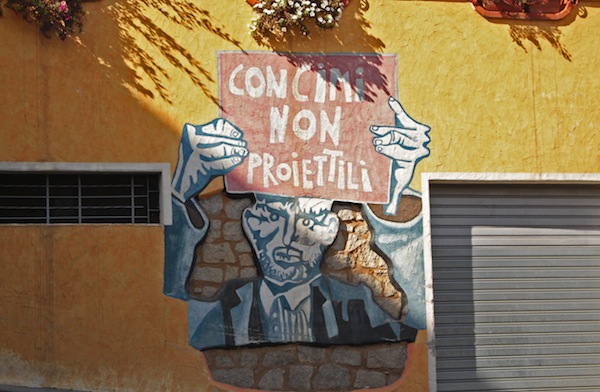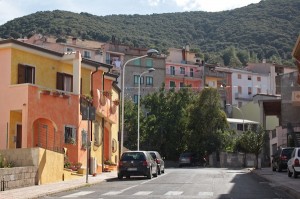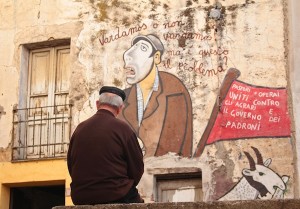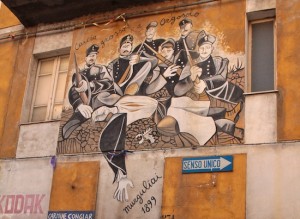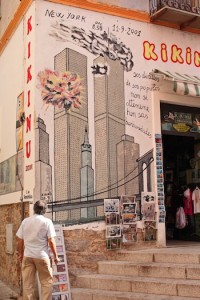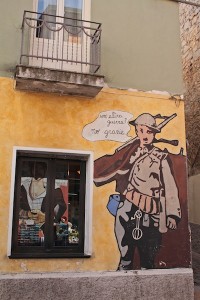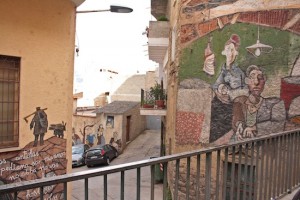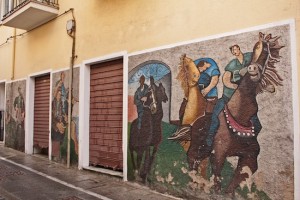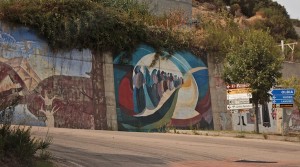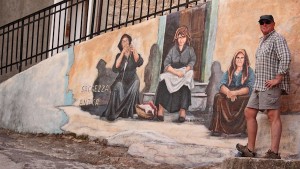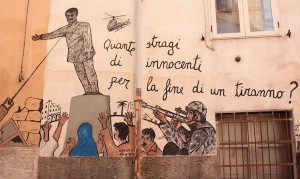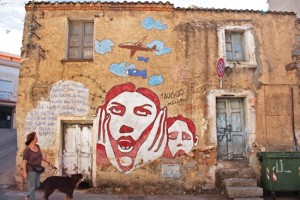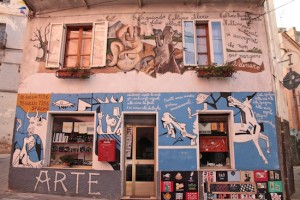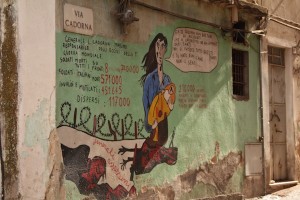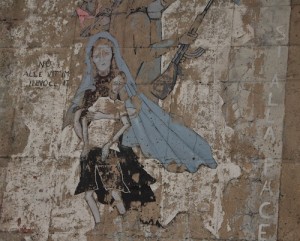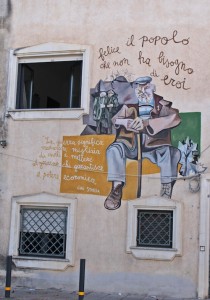Perhaps the highest concentration of political graffiti in Europe and formerly known as the Village of the Murderers – so how come we have never heard of Orgosolo until now?
Orgosolo is a small town in the middle of Sardinia. A few thousand inhabitants and a sleepy feel to it, especially during the heat of the day.
But it is the heat of battle, both political and personal, that has left its mark on Orgosolo – literally.
In the 1960s political cartoons and artwork began to appear on the town walls. What started as small-scale protests about Italy’s economic crisis, has blossomed into a concrete catalogue of protest against Italian and international politics. Hardly a wall remains untouched.
Issues from war, hunger, poverty, corruption and even shark-fining are writ large. Often they are in praise or defence of workers rights and the islands’ peasantry. The main picture at the top of this page calls for fertilisers, not bullets.
The murals are not only in Orgosolo, there are more than 250 around Sardinia, but more than 60% decorate the narrow streets of Orgosolo.
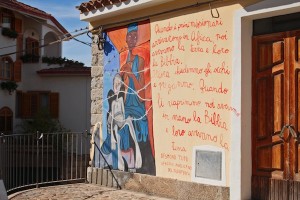
When the missionaries came to Africa they had the Bible and we had the land. They said Let us pray. We closed our eyes. When we opened them, we had the Bible and they had the land – Desmnd Tutu
Some have been given a new lease of life as the same politics comes back around – boatloads of refugees heading across the Mediterranean are being faced with a so-called let-them-all-drown policy.
Many of the slogans are in Italian, but there are many also in Sardinian. Many are deeply ironic in either language. We have made our best Google translate attempts, but forgive the technology and us if we have got some of it wrong.
Amongst the great art there is also great irony. The island’s famous protests are displayed in the town that used to be the capital of Sardinia’s bandit country – rife with kidnap, extortion and even murder. Two relatively recent deaths of a former gangster-turned-poet and the local priest who preached against violence are perhaps a sign that Orgosolo’s walls may condemn violence and corruption, but its streets sometimes tell a different story.
Given the history of the island and the constant invasions over the centuries perhaps it is no surprise that there is fight as well as protest engraved in their heart and on their homes.

